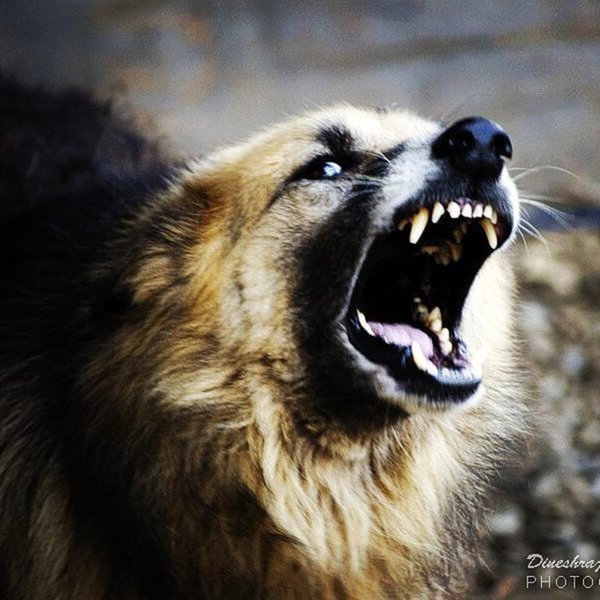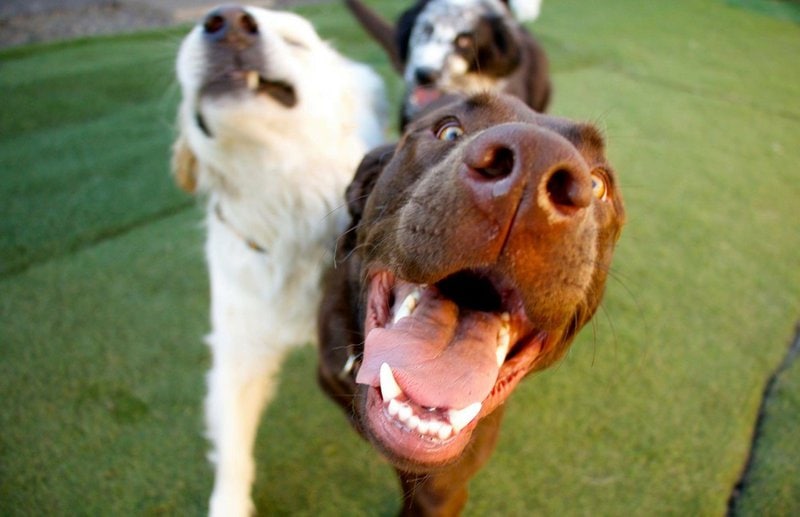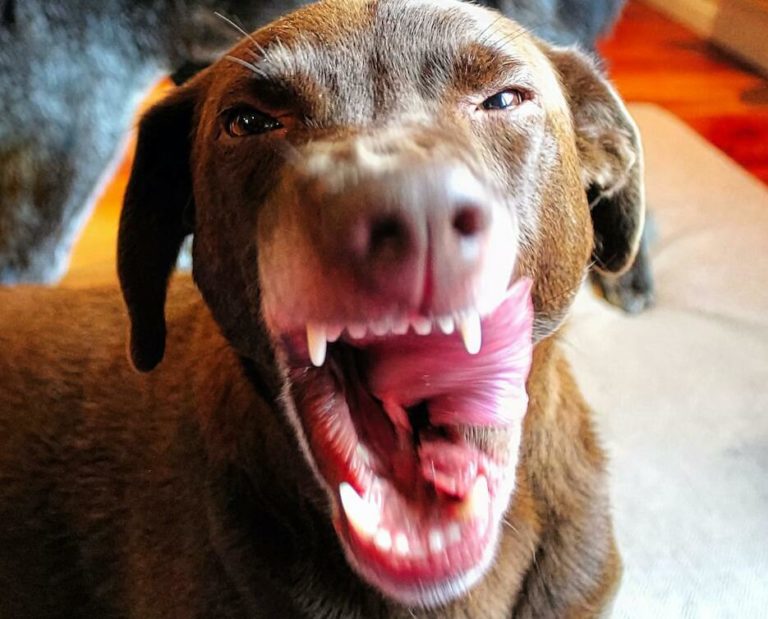The last thing any dog owner wants is their dog snarling at them or other people whether it is guests in your home or strangers at the part.
For the most part, snarling is associated with anger and hostile emotions in the dog. However, hostility is not the only message your dog may be trying to pass to you when they snarl.
In the following Q and A section, you will understand what snarling could mean and stop your dog from doing it. Let’s get right into it.
What Does A Dog Snarl Mean?
If your dog is snarling, it means they have a message they desperately want to pass to you. This can be that they feel angry and are giving a warning, or they feel happy and are appreciating you for it.
Here are the main reasons why your dog is snarling and other cues that accompany this vocalization to help you better understand your pooch’s needs.
They Feel Threatened
Your dog may be snarling because they feel scared or threatened. This usually happens with rescue doggies or new puppies that still haven’t settled into their new environment.
You may also notice your dog snarling when strangers pet them, whether it is in your home or outdoors. The best way to deal with this is early and adequate socialization training.
As A Hostile Warning
Snarling is often a sign of aggression and is a hostile warning to back off before the dog launches an attack. This will usually be associated with other physical cues, including bared teeth and pinned back ears.
This may happen if the dog is exposed to an unfamiliar dog that demonstrates hostility. It is also a common occurrence in guard dogs when they encounter a potential threat.
Contentment Or Pleasure
Snarling is not always a negative thing, with some dogs actually snarling when they are happy. This is comparable to purring in cats. The dog will let out a higher-pitched and less threatening snarl to show their contentment, whether it is during cuddling with you or receiving belly rubs.
Playfulness
Some dogs also snarl when they are being playful. The best way to tell when your dog is being playful and not aggressive is by observing for other positive physical cues. These include an excitedly wagging tail and gentle facial expressions.
Territorialism
Another common reason why dogs snarl is to protect their territory. This could be anything from their cage or dog bed to their food bowls.
For the most part, this happens with dogs that had a traumatic past where they constantly had to fight for their territory, as is the case with most adult rescue dogs.
They Are In Pain Or Physical Distress
Finally, some dogs snarl as a way to express pain or other physical discomforts when they are ill. Here, you may also notice the dog whining in between the snarls. Their mood and energy levels will also likely be uncharacteristically bad and low, respectively.

Is Snarl And Growl The Same Thing?
A dog’s growl and snarl are two very different vocalizations both in their sound quality and the messages that they are intended to pass.
Growls take the form of a low, guttural sound that is localized to the throat.
The mouth of the dog may be completely shut, and their facial expressions blank as they make this sound. Growls are more often than not neutral but can also be positive and are similar to a cat’s purring.
Snarls on the other hand are an aggressive form of growling that will usually include exposed teeth and hostile body language cues like pinned back ears and a stiff posture.
For the most part, dogs snarl to express negative emotions like hostility, fear, physical distress, and distrust.
However, snarls can occasionally be positive, as in the case of dogs snarling out of contentment or when they are being playful.

How Do I Get My Dog To Stop Snarling?
The best way to stop your dog from snarling is to address the cause of the snarling. Here are a few pointers that could come in handy for different causes.
If signs point to the cause of snarling being aggressive warnings, the best you can do is to back off. Give your dog their space and let them cool down on their own. If they are snarling at another pet, then it is best to separate them from de-escalating the situation.
In cases where you are dealing with fear as the cause of snarling in a puppy, you may want to actively comfort the dog. Sometimes cuddling or petting and talking to the dog may be enough.
If not, consider calming interventions like essential oil aromatherapy, calming treats, or crate training. We recommend Thundershirt Classic Dog Anxiety Jacket, a dog wearable that helps calm your dog in a hands-free manner. The fabric used is also soft and breathable, very comfortable for most dogs, and machine washable too.
For dogs snarling out of playfulness or pleasure, you don’t really want to change anything as it is a positive message that the dog is trying to pass to you. Just let them ride that positive wave and engage them in some fun games if you keep the positive vibes.
Finally, if you suspect that physical distress or pain could be the cause of your dog’s snarling, you may want to get a vet involved. Dogs in these cases are in a great deal of discomfort that only medical attention can help deal with.





